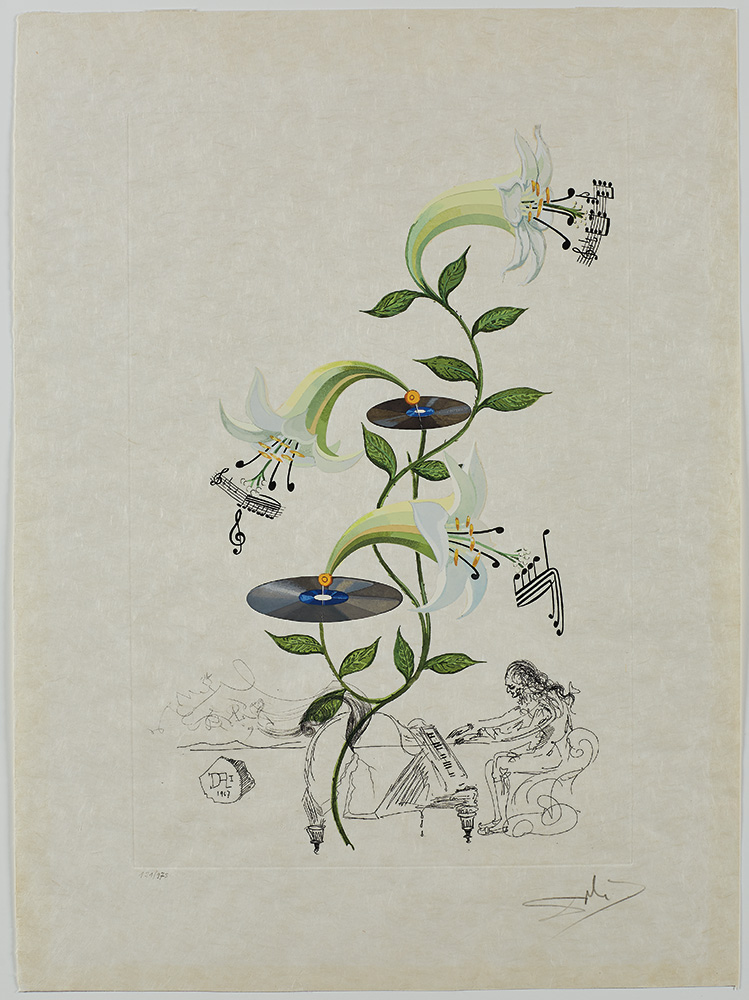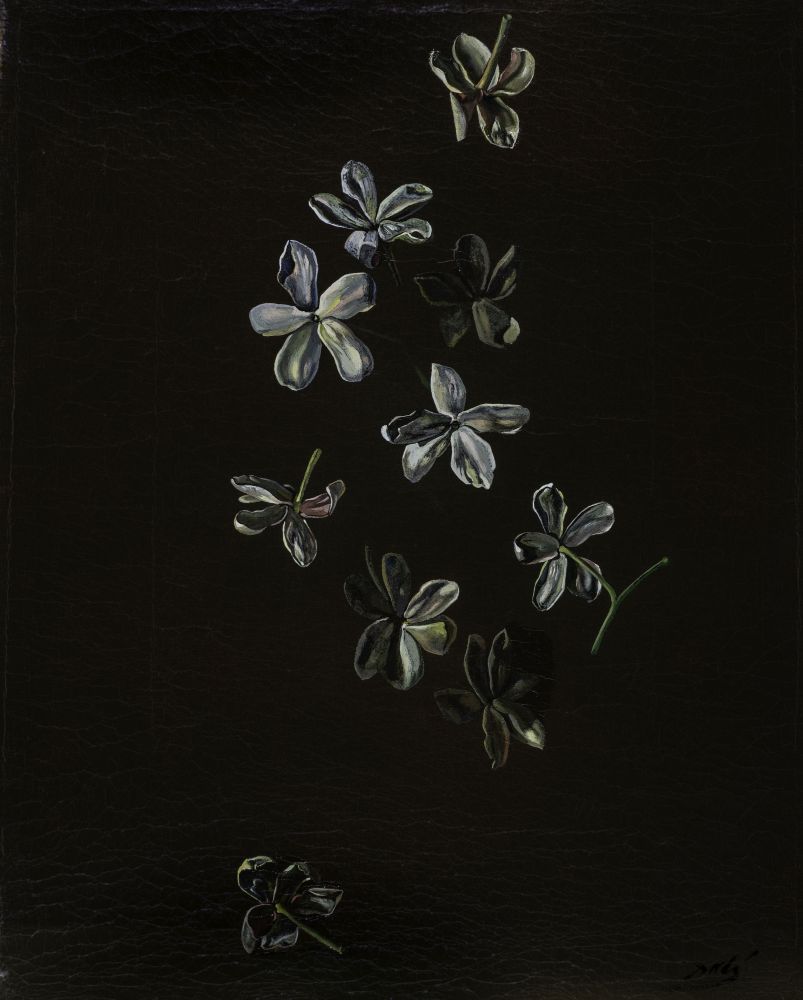At first glance, Salvador Dalí’s Lilium Musicum (Lily) appears to be a delicate drawing of a classic white lily, its flowers floating from a winding stem as if from an eighteenth-century book on botanicals. Upon closer inspection, however, we see that the surrealist has in fact imparted his own interpretation of the flowers, reimagining them as gramophone speakers, the stamen transformed into musical notes leading to stanzas. Dalí completes his whimsical reinterpretation with a sketch of a pianist bringing the music to life on the page.

Lilium Musicum is just one of the works of art that will be on display as part of Reimagining Nature: Dalí’s Floral Fantasies, which opens May 18, 2024 at The Dalí Museum in St. Petersburg, Florida.
Reimagining Nature showcases three of Dalí’s best-loved suites of botanical prints from the museum’s vault — Flora Dalínae (FlorDalí), 1968, FlorDalí (Les Fruits), 1969 and Florals (Surrealist Flowers), 1972 — alongside a selection of archival materials, including paintings and print advertisements that the artist created for brands like Vogue and perfumier Leigh. The suites are being displayed together for the first time in more than two decades.


“The works in this exhibition demonstrate Dalí’s uncanny ability to see and think differently, and to discover the unexpected,” says Peter Tush, senior curator of education at The Dalí and curator of the exhibition.
At the same time, Dalí taps into a more classic approach with Shower of Jasmine, which he painted in 1954 while immersed in the world of surrealism and creating masterpieces like The Disintegration of the Persistence of Memory and Study for Soft Watch Exploding, the sketch for Soft Watch at the Moment of the First Explosion.

When asked for his insights into why Dalí changed course with Shower of Jasmine, Tush says at that time the artist was primarily living in Spain, yet still traveling to America in the fall and likely Paris in the spring.
“He’s really thinking of the tradition of Spanish artists like Velasquez, Zurbarán and Goya, and he’s stepping back and forth between doing major statements that have this kind of scientific surrealism to them, and then doing something more traditional that shows the lineage between himself and these artists that he admires and respects,” explains Tush. He adds that jasmine was Dalí’s favorite scent and the flower is found throughout his florals.
“This piece [Shower of Jasmine] feels almost like a Spanish still life, except it’s a shower of jasmine rather than a tabletop full of jasmine,” Tush continues. “They have this kind of ethereal quality where they seem to be almost floating as well as falling. I think it really is just striking and unexpected, and he was just really captivated by their beauty, which seems out of keeping for what we associate with Dalí. It’s almost like [he was] flexing his muscle and showing that this was as satisfying as any of his surreal visions.”
![Reimagining Nature Dalí’s Floral Fantasies - Press Image 6 - Tiger Lillies [+ mustache] One of Salvador Dali's florals, Tiger Lilies and Mustache](https://clone.flowermag.com/wp-content/uploads/2024/04/Reimagining-Nature-Dalis-Floral-Fantasies-Press-Image-6-Tiger-Lillies-mustache.jpg)
Around fifty works of art are on display in Reimagining Nature: Dalí’s Floral Fantasies, which opens on May 18, 2024 and runs through October 20, 2024.
“It’s very fun,” Tush says of Reimagining Nature. “I think it’s the way Dalí approaches the world —he’s always looking at something, expecting to discover something that nobody else is seeing, and sharing that [vision] with others.”
